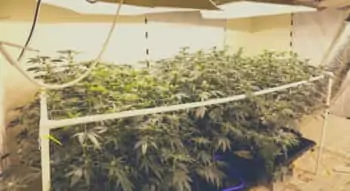Ferns are the new Instagram-friendly plants, and almost everyone is potting them for an elevated indoor ambiance. Ferns are not as easy to grow as other plants, but they are worth every effort you put into growing them at the end of the day.
How To Grow Indoor Ferns And Keep Them Alive, you need proper temperature, soil, humidity, fertilizer, and light. Ferns need all these things in moderation, and excess or lack of anything can cause your plant to die. Are you excited to know about how to grow indoor plants let’s get right into it?
Table of Contents
Tips To Grow Your Indoor Ferns
Indoor ferns are a little high-maintenance as their origin dates back to the Jurassic period, so it actually is going to be an antique in your house, so take a pen and paper and note down all the following tips so that you can help your fern to stay alive and grow.

All They Need Is Humidity
Ferns are some of those plants that love humidity, and they are more likely to die in dry environments. They grow in moist areas, so, if you are keeping ferns to elevate the beauty of your living room.
You can consider using a humidifier to keep the humidity of your room high or spray your plant with soft water time by time so that it gets all the moisture it needs to survive and grow.
Light It Up
Even though ferns grow in moist places, they still need sunlight to survive and sustain themselves. Ensure that your fern is getting enough sunlight; otherwise, it will just be damaged and eventually die because of lack of light.
Light helps your plant to grow to its fullest potential so you can keep your house plant in your window so it can soak up the goodness from the light. A word of warning is that never leave your fern sitting in direct sunlight as it will completely destroy your fern, so a subtle and indirect light would be great for their growth.
Repotting Is The Key
Repotting your fern from time to time gives your plant a boost in growth and helps in keeping them alive as it eradicates any diseases that are developing in the roots of your plants. Springtime is the ideal one to repot your plant, and it helps more with the growth.
If you think that your fern is not ready for repotting, you can just change the upper layer of compost. Cut any damaged roots to provide your plant with new goodness and promote its growth.
You can also divide your fern in two while you are repotting so you can get 2 ferns with 1 and then further increase the number of your fern collection eventually.
Goodness Of Compost
Good compost is the key to a healthy plant, and if you want your plant to stay alive and thrive, provide it with all the goodness from compost. Compost gives all the customized nutrients that your fern needs to grow faster and healthier.
A fern has very delicate roots because of the humid and moist environment it grows in. So, the compost needs to be good enough to fulfill the needs of your fern, and an ideal fern compost should contain peat, sand, and other necessary compounds to make your soil and plant long-lasting.
You are not supposed to let your compost dry out, so if you ever see dry compost in your pot, water your fern, and in order to keep the compost moist, water your plant daily.
Give Them Fertilizers
Fertilizers help your plants grow and flourish, so whenever in doubt, give your plant some fertilizer. When it comes to fern, its feeding time is only in summer as it rests during winter, so you only have the summertime to feed and make your plant healthy.
Mix fertilizers with water and spray them on your plant twice or thrice a month. It helps your plant not to be overloaded with fertilizer and have a moderate level of fertilizers.
Temperature Matters
Ferns are not really fans of colder environments, and they really appreciate moderate to warmer temperatures. The warm temperature for a fern is 60-70C, and the moderate is 50-60. These temperatures are ideal according to the type of your fern and its place of origin.
Ferns from tropical forests need warmer temperatures, and the ferns that originate from areas with moderate or colder temperate only need heat in moderation.
Any temperature lower than these will seriously affect the growth of your plant. If the temperatures are consistently low, your plant can potentially die because of it, and you certainly don’t want it.
Best Indoor Ferns
Now that you know all the tips and tricks to grow your ferns and keep them alive, it’s high time that you know some of the best ferns that will be great to look after and that look aesthetically pleasing without much ado.
- Button Fern
- Holly fern
- Rabbit’s foot fern
- Boston fern
- Staghorn fern
- Crocodile fern
- Silver lace fern
- Kangaroo paw fern
Conclusion
Ferns are the talk of the town these days, and their care is slightly different from your usual household plants. We hope that this guide helped you comprehend all the ways to take care of your house plants in a better way and keep them alive and thriving.
Also, some of the best household ferns are also given to make a choice easy and hassle-free for you. Wishing you very happy and healthy ferns.
Recent Posts
Have you found yourself wondering, 'why is my bamboo growing so slow?' Despite the fact that bamboo plants are remarkably fast-growing, it can sometimes take months (or even years!) to see any signs...
Miracle-Gro is a huge help when you are trying to get decent yields out of your plants or if you want them to thrive. However, you may have noticed that a single dose of fertilizer does little to...

